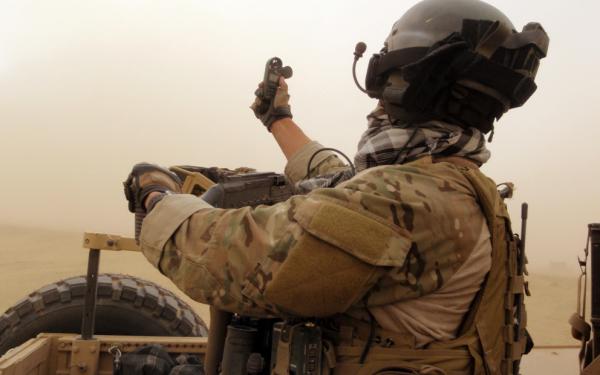The Air Force’s newest enlisted specialty- Special Reconnaissance, has formally arrived thanks to the newest release of the AFECD (Air Force Enlisted Classification Guide). The release provides a clearer picture of what the new specialty will be trained and what their mission is. Combined with information that we have already attained from previous sources, we now can see where Special Reconnaissance fits into the Air Force Special Warfare construct.
For those that missed the original announcement, Special Recon is the product of the Special Operations Weather Team (SOWT) career field re-inventing itself. With better meteorological forecasting models than ever before and the rise of Air Force Special Warfare, SOWT recognized a change was needed to fill existing AF mission requirements and pulled the trigger with changing to Special Reconnaissance.
Applicant Requirements
The requirements list for Special Reconnaissance (SR) applicants is not long but can be difficult to attain. The requirements are:
- Speak English Fluently
- A high school diploma or equivalent
- Ability to attain a Top Secret clearance
- Pass the SR requirements on the PAST test
- Score a 30 on the SR Selection Model in the Tailored Adaptive Personality Assessment System (TAPAS)
- Meet medical qualification standards for jump and dive duty (See our comprehensive Medical Eligibility Guide HERE)
- Meet general Air Force enlistment requirements, outlined in Air Force Instruction 36-2002.
Special Recon Pipeline
The training pipeline for SR closely mirrors the initial skills training of Pararescue and Combat Control. Together with PJ & CCT, SR will be placed into the Special Warfare Prep Course after basic training. After Prep is Assessment & Selection, Pre-Dive & Dive School. From there, Static Line and Freefall schools will be attended along with Survival School (and dunker training). All of the above courses are attended with the PJ and CCT counterparts through their pipeline journey.
After these common pipeline courses, SR will attend their career field specific course, aptly named the Special Reconnaissance Apprentice Course. At this course, trainees will gain experience in reconnaissance, surveillance, long-range precision engagement and target interdiction, and combat enabling tasks. This will include collecting meteorological and environmental data- a holdover requirement from the SOWT career field, yet significantly reduced in scope. Other skills will include demolition, communication and signalling, human intelligence gathering, operational preparation of the environment and tactical cyber applications.
The AFECD also mentions a Special Warfare SOF Common Skills Course in the training pipeline after the Assessment and Selection phase. This course has yet to be created by the Special Warfare Training Wing. When eventually constructed, it will be designed to take like-minded AFSPECWAR skills that all operators need and teach them in one central location. Common skills that may be placed in this course include: Small Unit Tactics, Weapons Handling, Airmanship, etc.
The Pipeline is structured as:
- (Basic Training)
- Special Warfare Prep Course
- Special Warfare Assessment & Selection Course
- Special Warfare SOF Common Skills Course (When available)
- Special Warfare Pre-Dive
- Air Force Dive School (Open & Closed Circuit)
- Basic Airborne Course (Static Line)
- Military Freefall
- Survival, Evasion, Resistance, Escape (SERE) School
- Water Survival Course
- Underwater Egress Course
- Special Reconnaissance Apprentice Course
SR’s Mission inside Spec War
SR operators will be operating under the AFSOC team ‘Access’ packages. These teams include Combat Controllers and Pararescuemen whose purpose is to survey and prepare access for aircraft and other SOF assets. These “left of bang” type of mission will include setting up and securing aircraft landing zones, drop zones and assault zones, among other special interest areas.
Special Recon operators will aid military decision makers by performing Operational Preparation of the Environment activities that inform planners knowledge of the battlefield and perform target development. Some of the tools used to gain this information will include cyber, space, human intel and unmanned aerial systems to conduct their activities.
Operators will also be well versed in weaponry, to include standard personal and crew served weapons. Additionally, SR operators will have demolition knowledge to assist in clearing battlefield environments if required. They will also be skilled in long range precision equipment, assumed to mean Sniper Rifles.
More information
-For ongoing discussions and latest info on Special Reconnaissance and Air Force Special Warfare, check out the AFSW Forums
-Check out our dedicated Special Reconnaissance page for add’l information, history, links and media
-The 30 Apr 2019 AFECD was the source document for multiple pieces of information in this article. You can find the AFECD HERE (SR is page 100)

